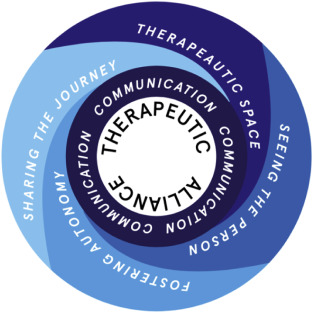
Physical therapy is an effective treatment for many conditions that affect a person’s ability to move. One systematic review published in 2016 found that physical therapy improved health in nearly all studies, when compared with usual care (1). But we also know that patients who could benefit from physical therapy sometimes don’t. The most common theory to explain this is non-adherence, which means that some patients don’t complete the recommended amount of physical therapy and/or that they don’t follow through with home exercises. Understanding the factors that promote success or are barriers to patient success with physical therapy is an important step in understanding what makes physical therapy work well, and where there are opportunities for improvement. After all, there is nothing more satisfying for both patients and clinicians than success with treatment!
First let’s take a look at why physical therapy is an important part of healthcare. Most people are aware that physical activity is good for their health, but they may not be aware that being active reduces risk of all non-communicable diseases, including cancer and depression. Physical therapists are movement experts, and movement is one of the most important determinants of health (2). Movement and physical activity are terms that are often used interchangeably to describe using muscle energy to move the body. When movement is organized and purposeful, it is often called exercise. Many people enjoy participating in structured exercise and sports, and that’s fantastic. However, for those who don’t, this is good news because it is physical activity or movement that matters for overall health. Being physically active is the key to health of both body and mind.
Now, back to physical therapy. Physical therapists are movement experts who are skilled in evaluating and treating movement impairments. They work with people to help restore and improve physical activity and movement, which in turn improves both physical and mental health. As you can guess, nearly every treatment plan includes movement and exercise!
It seems like a simple recipe for success: a treatable movement problem, a movement expert, and exercises that can be done in the clinic and at home. What could prevent physical therapy from working as well as we think it should?
Engagement, often quantified as participation or completion of sessions and exercises, is necessary for successful physical therapy. The symbiotic partnership between physical therapist and patient is vital for engagement. Patients both receive and give instructions for their treatment, and physical therapists design exercise programs in response to their patients’ needs. Ideally, the physical therapist adapts to the patient’s physical and social needs, and the patient is motivated to engage. This relationship is called a therapeutic alliance, and it has been found to be a predictor for success with physical therapy (4).

A strong therapeutic alliance and engagement are needed because getting stronger, more flexible, fitter and faster all require time and practice of skilled movements. Typically it takes practice of 3-6x/week for at least 2-4 weeks to make noticeable improvement in strength, range of motion, balance, agility, or power. Essentially that means that there is a required investment in engaged practice before the results start to pay off. Delayed gratification can be more difficult if the patient misplaced the therapist’s instructions, got busy at work, or just had life get in the way of diligent practice. Conversely, ongoing communication between physical therapist and patient, visual results, and tracking of engagement and results may all improve patient engagement.
Today’s technology can provide pleasing solutions for common barriers to success with physical therapy, such as lost paper copies and forgotten exercises. Apps may be used to show exercises, remind patients to do exercises, and schedule and track exercise completion. Consider how technology plus human care might deliver the best of both worlds: digital measurements and remote tracking and monitoring can enable patient-therapist communication between visits, strengthening the therapeutic alliance which will likely improve outcomes. The physical therapist who can see the patient’s activity and read measurements recorded digitally is able to monitor patient progress remotely and make adjustments to steer toward the patient’s desired outcome. The patient who can record exercise engagement in a platform that is visible to the physical therapist knows that the physical therapist is monitoring, and accountability check-ins are known to improve engagement. In this way, technology enables continual two-way communication between physical therapist and patient, which motivates engagement, which in turn improves outcomes with physical therapy.
The are many different types of digital movement health technologies and solutions available and even more are continuously being brought to market. Many of which, when strategically integrated and implemented can improve patient and provider experiences and outcomes. Stay tuned as we look to discuss the different types of digital health technologies and capabilities becoming available to Physical Therapists and other movement health experts in future posts.